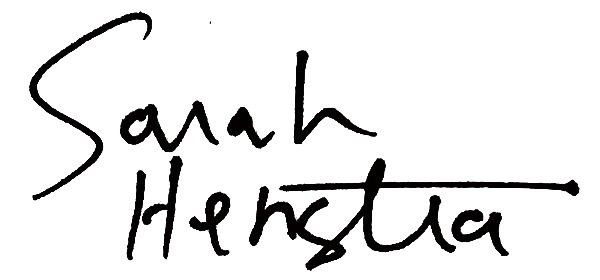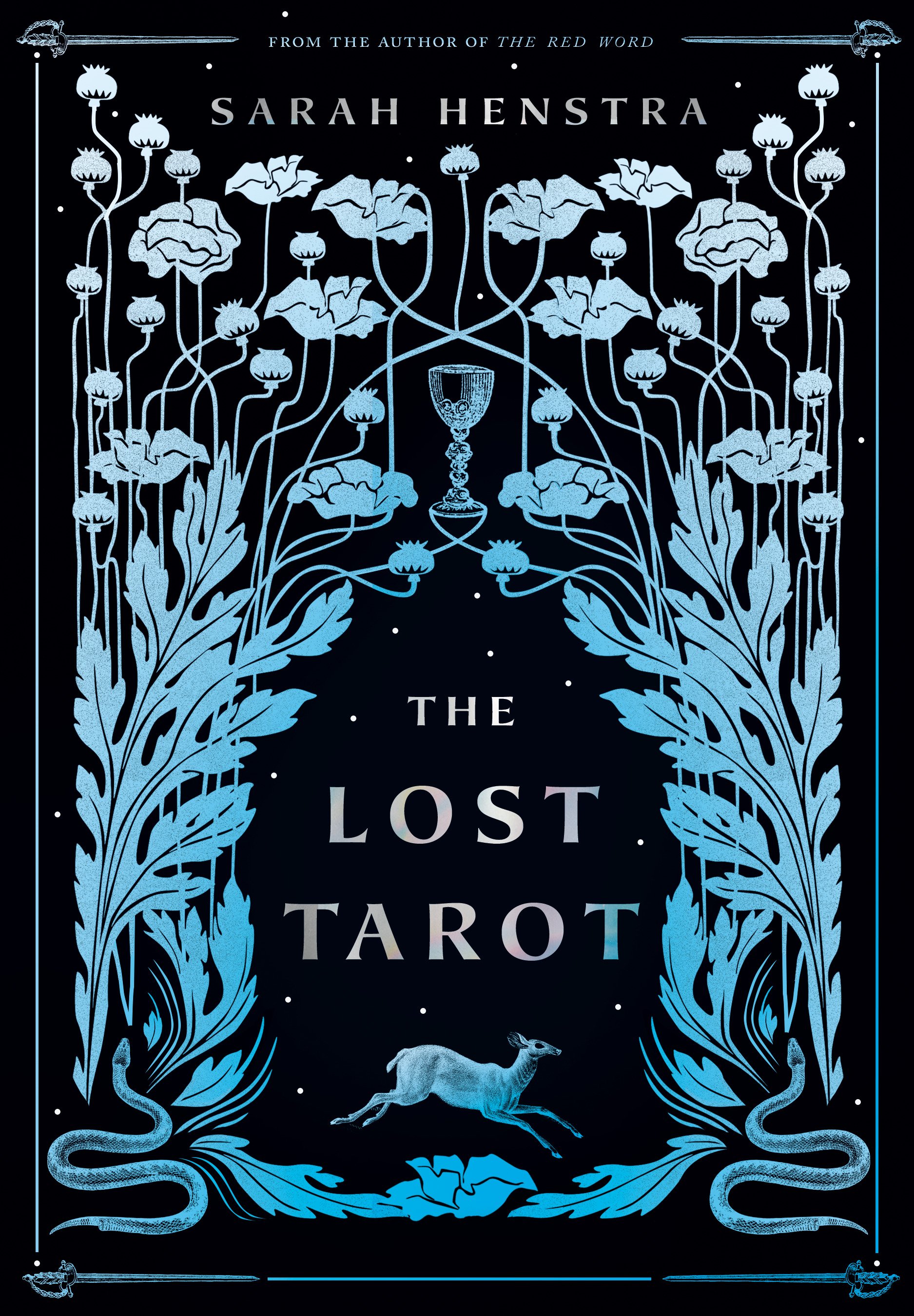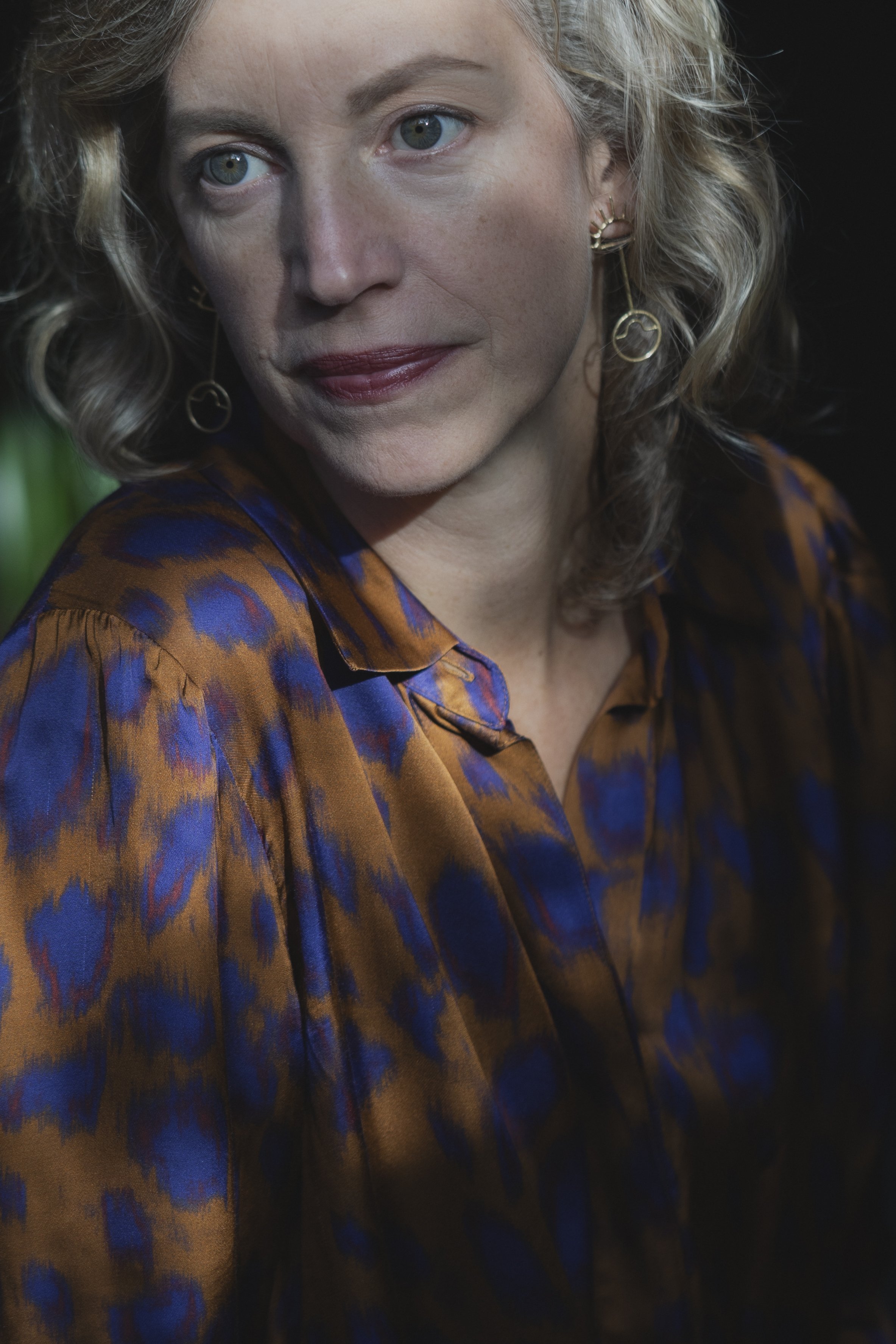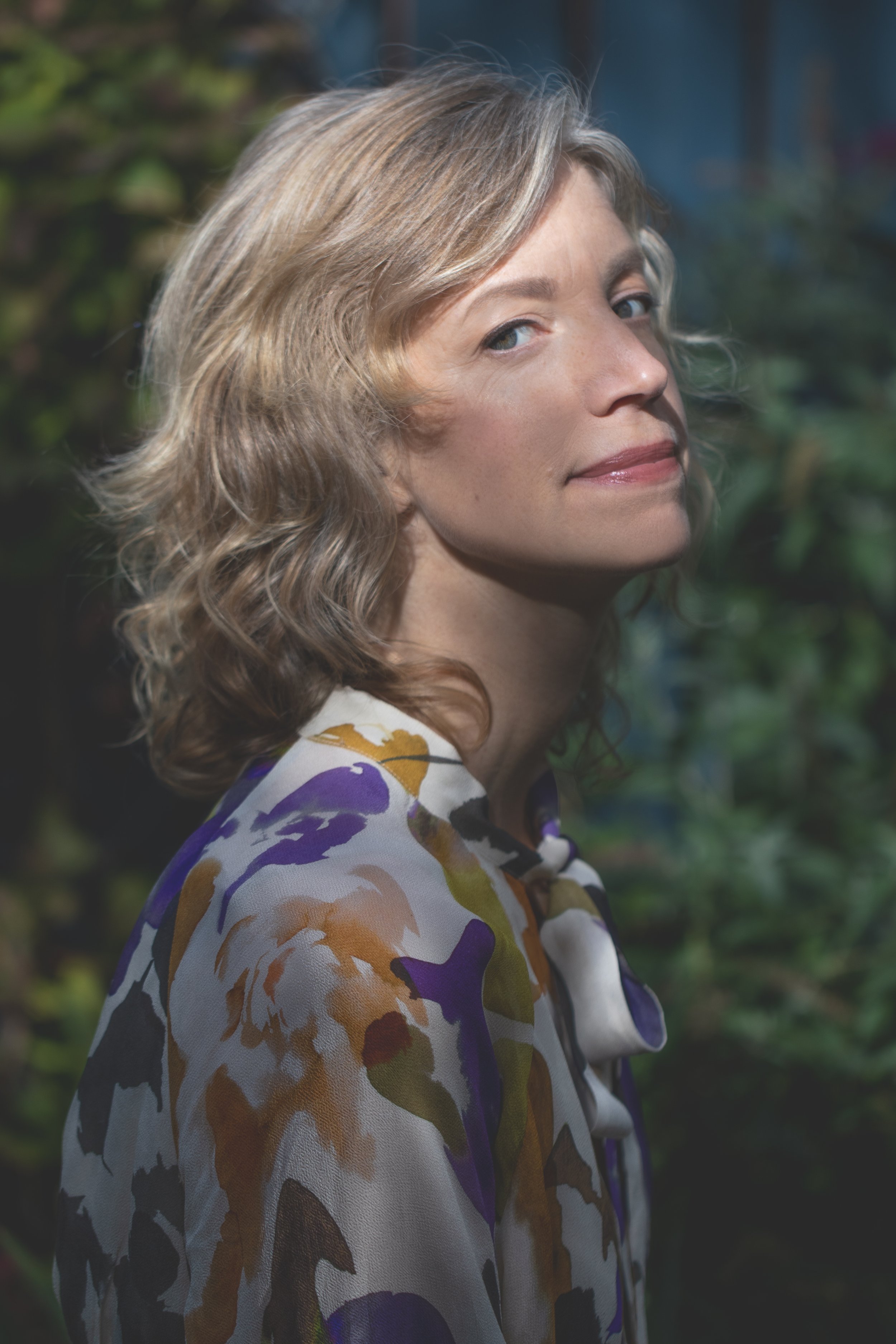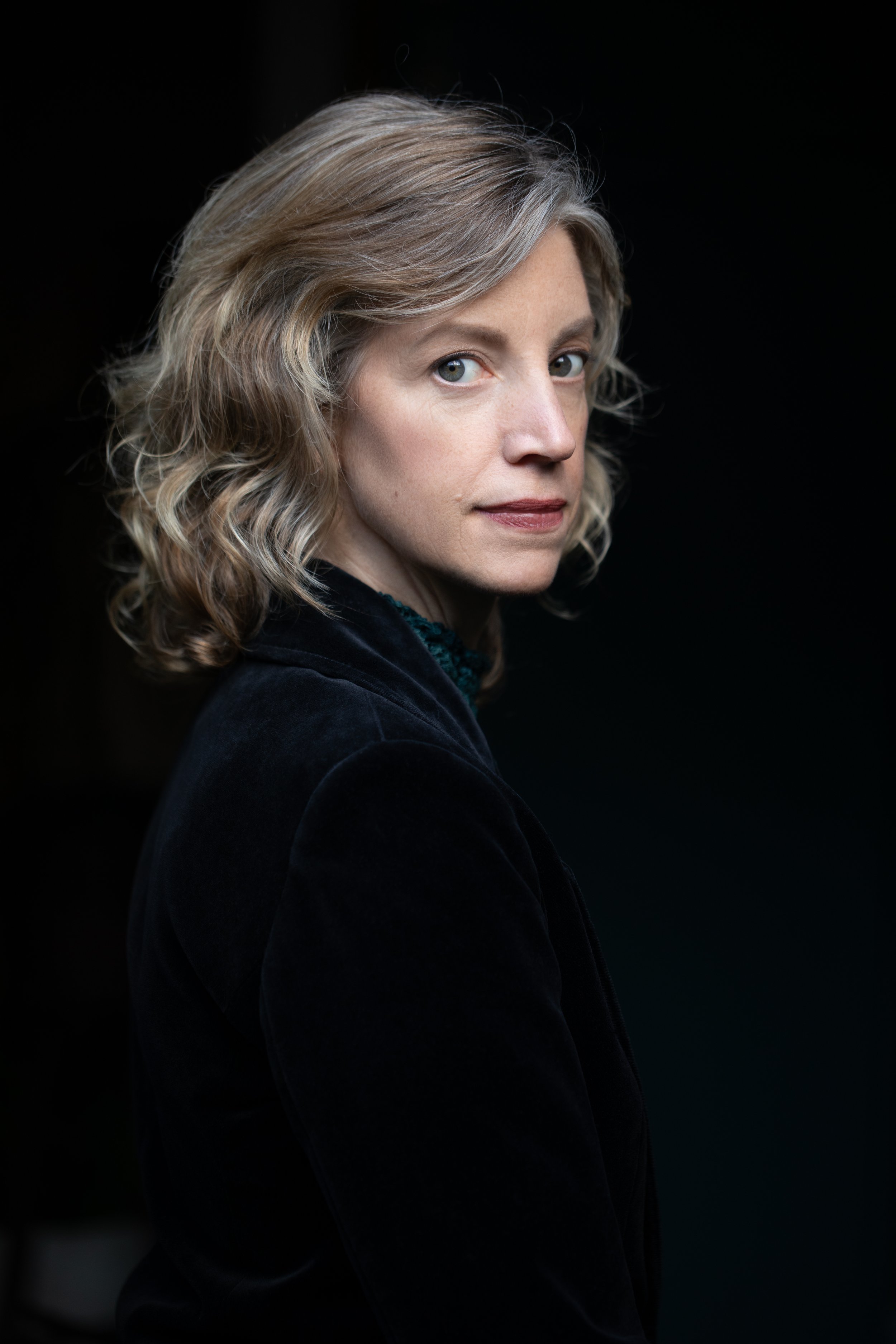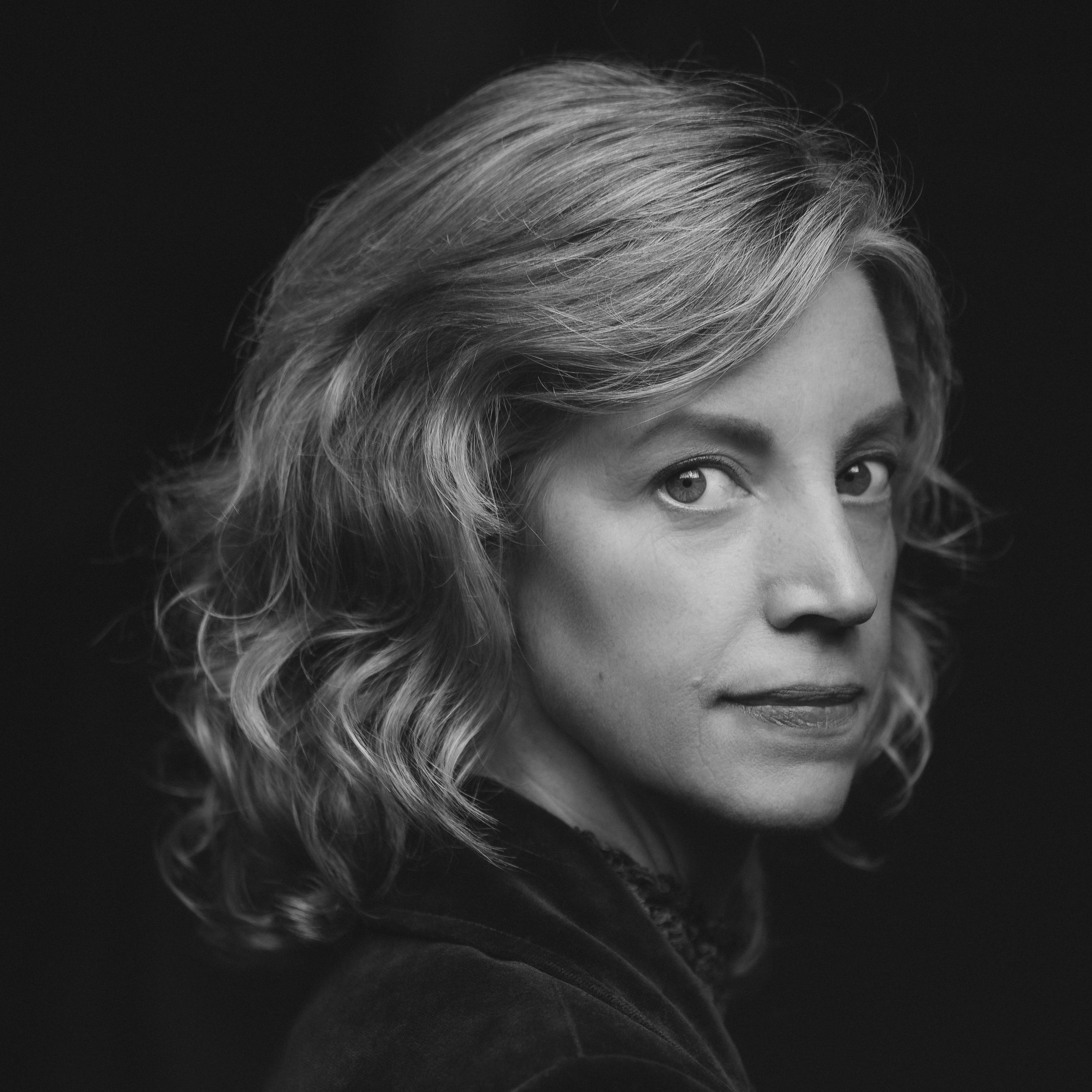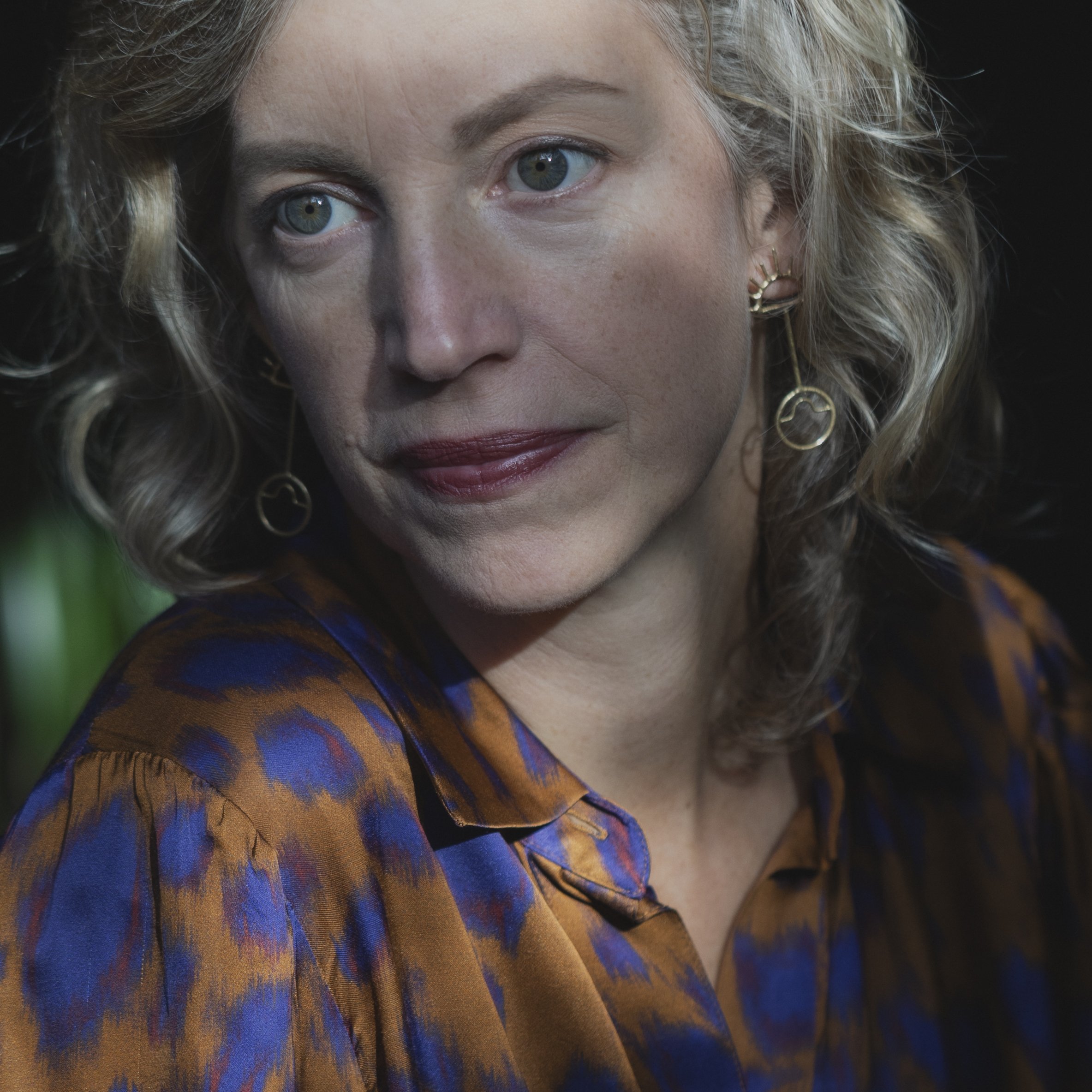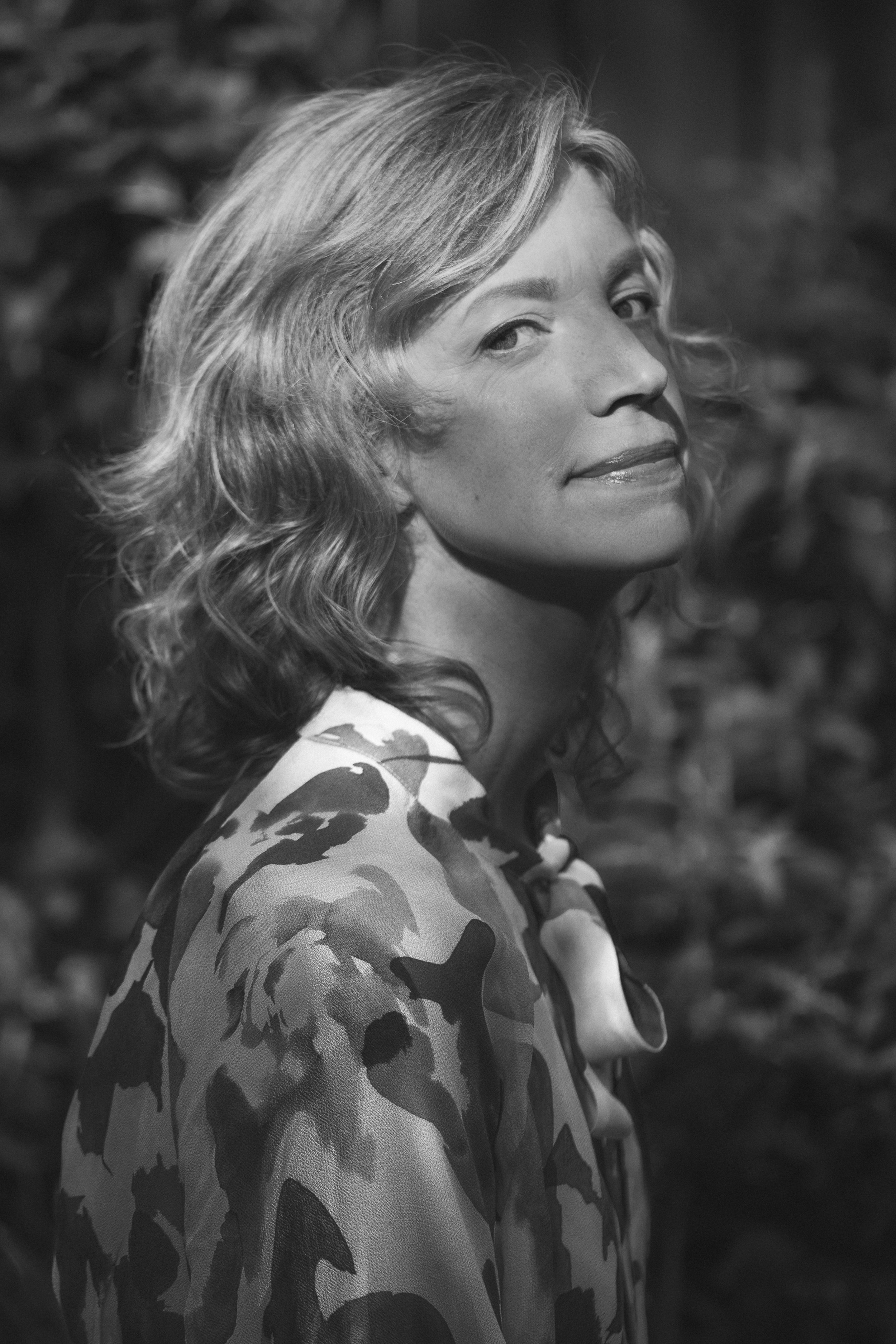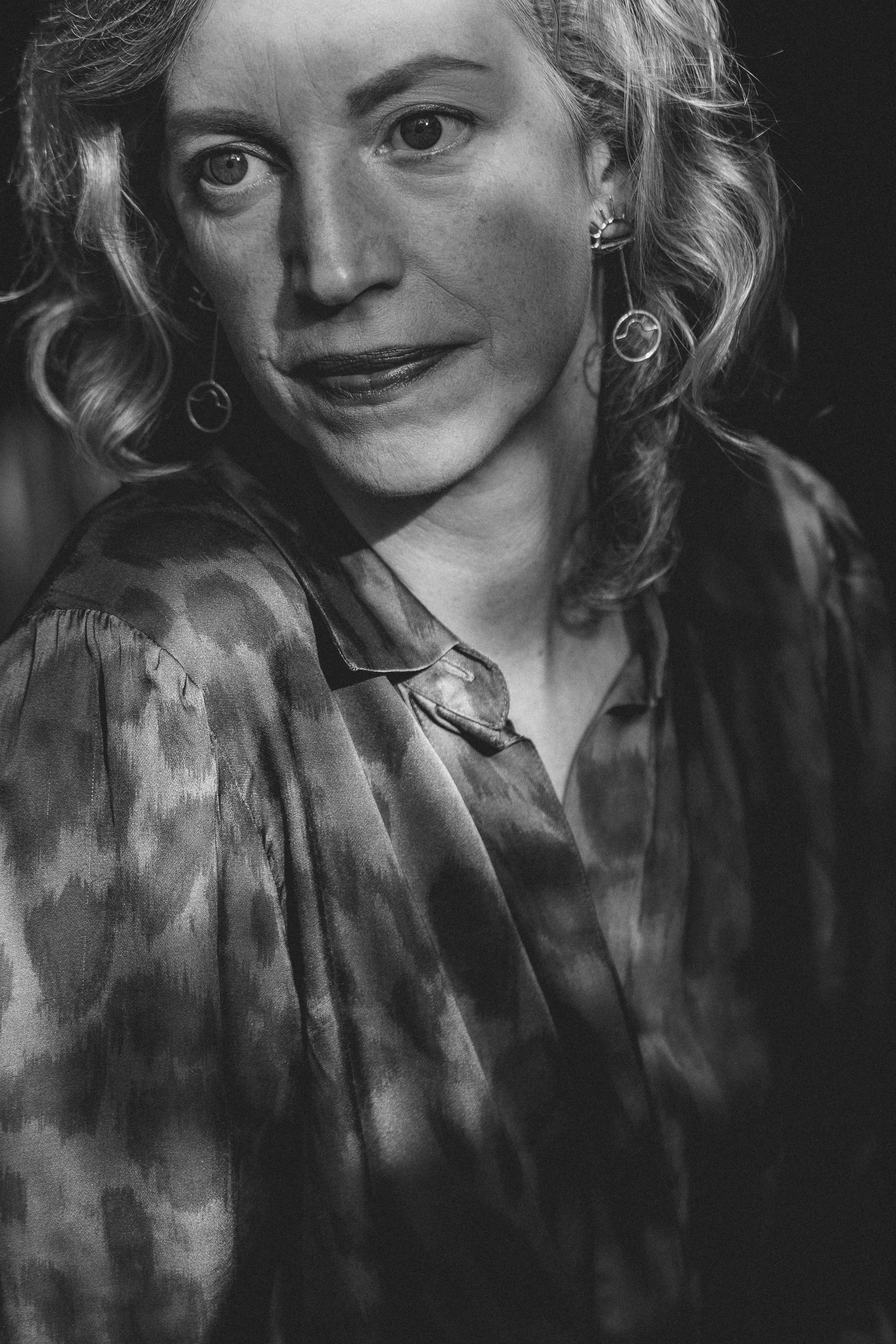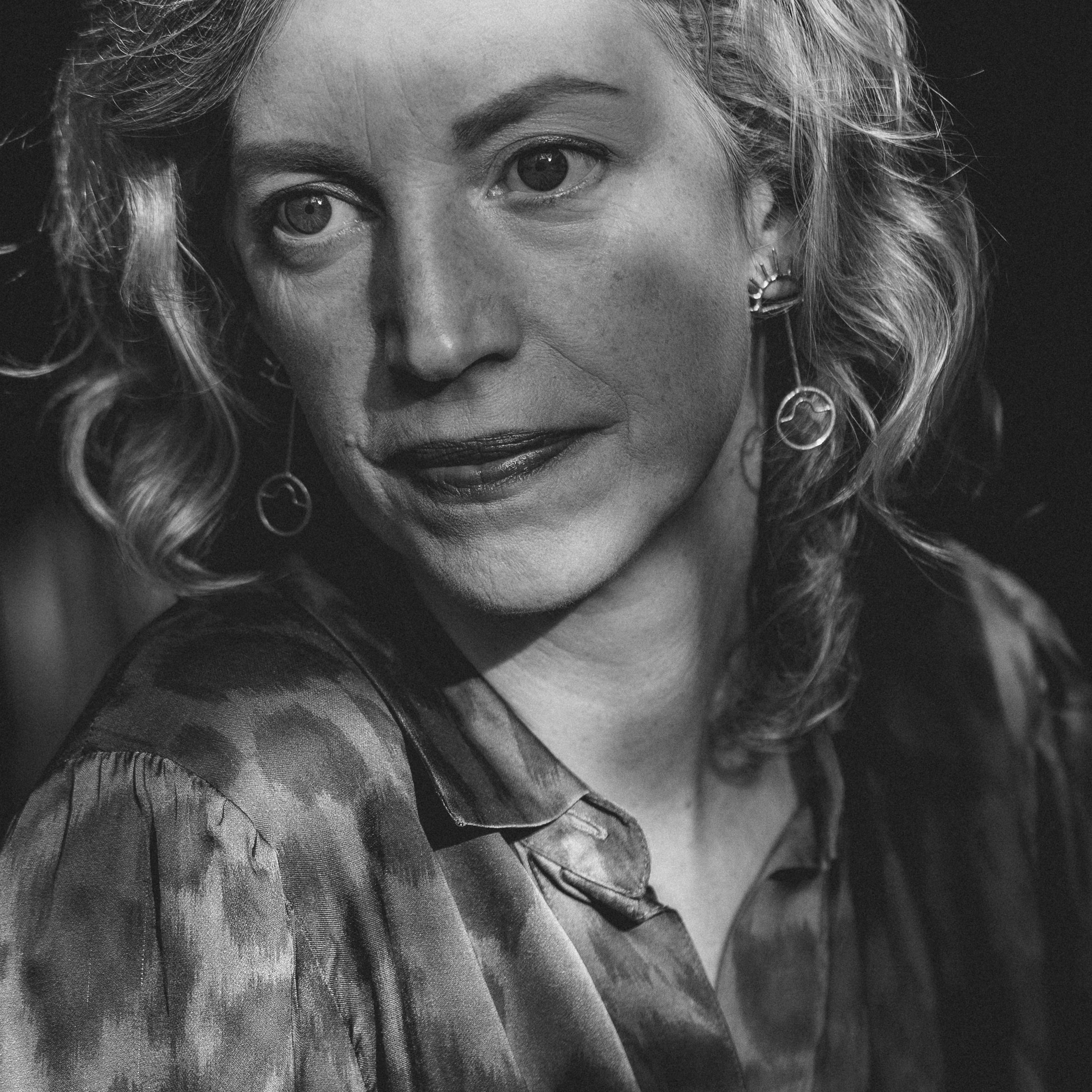PRESS KIT: Sarah Henstra & The Lost Tarot
Sarah Henstra is a Governor-General’s Award-winning novelist and English professor. Her newest novel, the instant national bestseller The Lost Tarot, is a dazzling art-world mystery out now from Doubleday Canada. Sarah is an insightful and dynamic speaker and writer, available now for interviews and events.
About The Lost Tarot
“Offbeat, quirky, and powerfully beguiling—a glittering treasure of a book.”
A lost tarot card is the key to unravelling decades of secrets in this dazzling novel about the power of art and deception, from Governor General's Award–winning author Sarah Henstra.
Theresa Bateman, a struggling junior art historian in Toronto, receives a single tarot card in the mail. The image is unmistakably the work of celebrated avant-garde artist Lark Ringold, and its discovery would mean a breakthrough in Theresa's career. But the legendary Ringold Tarot doesn't exist. . . . Its paintings were lost in a fire that claimed Lark's life along with dozens of others—the final, horrific implosion of a notorious cult called the Shown.
Sixty years earlier in England, Lark and his twin sister Nell join a bohemian commune led by their charismatic uncle. While Lark settles happily into his work on the tarot project to aid in his uncle's occult teachings, Nell finds it harder to adjust. Just beneath the Shown's golden surface she uncovers secrets that, if revealed, threaten to erupt into chaos.
Why was the tarot card sent to Theresa? How can she prove its connection to Ringold when her art-world superiors declare it a fake? And who has been holding onto it for all these years—and why? As Theresa follows the trail of the lost tarot, she is drawn into the deeply entwined mysteries of Nell, Lark and the Shown. What begins as the tale of one artist and the battle over his legacy unspools into a web of passion, violence and deceit. In twist after startling twist, and in vibrant, exquisite prose, The Lost Tarot is a landmark novel about love, creativity, power and perception.
Publication Details
Title: The Lost Tarot
Author: Sarah Henstra
Publisher: Doubleday Canada
On sale: June 18, 2024
List price: $26.95
Available for preorder: Chapters-Indigo, Amazon, local indies
Paperback: 328 pages | ISBN 9780385688116
ARC/galley inquiries: Ruta Liormonas, rliormonas@penguinrandomhouse.com
About Sarah Henstra
-
SARAH HENSTRA is the author of the novels The Lost Tarot and The Red Word, which won the 2018 Governor General’s Literary Award for Fiction and was nominated for the Dublin International Literary Award. She is also author of the young adult novels Mad Miss Mimic, a CLA Best Book for Teens and a finalist for the Geoffrey Bilson Award for Historical Fiction for Young People, and We Contain Multitudes, which was the 2022 “Vermont Reads” program title and was nominated for the White Pine Award. Sarah has a PhD in English and is a professor at Toronto Metropolitan University.
-
Sarah Henstra (she/her) is the author of five books, including the 2018 Governor General’s Award -winning novel The Red Word. She is an Associate Professor of English at Toronto Metropolitan University.
Henstra’s newest novel, The Lost Tarot, was published in June 2024 by Doubleday Canada.
Henstra’s third novel, We Contain Multitudes, was selected as the 2022 “Vermont Reads” title by the Vermont Humanities Council. It was a ParnassusNext Club pick at Parnassus Books and shortlisted for the Ontario Library Association’s White Pine Award. Booklist called it “an absolutely extraordinary work of fiction that proves the epistolary novel is an art form.”
Her second novel, The Red Word, won the 2018 Governor General’s Literary Award for Fiction and was nominated for the Dublin International Literary Award and the Republic of Consciousness Award. The GG jury called it “an astonishing evisceration of the cliches of sexual politics” and “an utterly effing good read.”
Her first novel, a YA historical adventure-romance titled Mad Miss Mimic, made several best-of-the-year lists and was shortlisted for awards by the Canadian Library Association and the Canadian Children’s Book Centre. NOW magazine named it “a very entertaining thriller with a feminist twist.”
Henstra earned a PhD in twentieth century British literature at the University of Toronto. An award-winning, tenured faculty member at Toronto Metropolitan University, Henstra teaches graduate and undergraduate courses in creative writing, critical theory, psychoanalysis & literature, the Gothic, and fairy tales. The scholarly monograph that developed from her dissertation work, The Counter-Memorial Impulse in Twentieth-Century English Fiction, was published by Palgrave Macmillan. In 2022, Henstra was named a Massey College Research Fellow. She is the recipient of grants and fellowships from the Canada Council for the Arts, the Social Sciences and Humanities Council of Canada, the Toronto Arts Council, the Siena Art Institute (Italy), the Virginia Center for the Creative Arts (USA), and Mauser Ecohouse (Costa Rica).
Henstra is the daughter of Dutch neo-Calvinist (Reformed) immigrants whose community settled a 2900-ha span of organic muck north of Toronto called the Holland Marsh. Long used for hunting and fishing by Huron and Iroquois peoples, the marsh was drained in the 1920s for settler farming and turned over to several waves of Netherlanders who knew their way around dikes and canals. Henstra’s parents struck out for the wilder, wetter coast of British Columbia when she was a baby but brought her back inland at puberty. She currently lives in Toronto.
Henstra has read widely from her work, led workshops and lectured at academic conferences and literary festivals worldwide—Adelaide, Budapest, Cheltenham, Edinburgh, Los Angeles, Montreal, New York, Vancouver.
-
1/ Sarah bought her first set of tarot cards at 14 and immediately had them confiscated by a teacher at her Christian school.
2/ Sarah has written lyrics for many bluegrass/folk songs and most recently for a choral work.
3/ In university, Sarah kept a breeding pair of cockatiels named Byron and Shelly until one summer day, in a fit of emancipatory idiocy, she set them free in her backyard.
4/ On most days, at least half the clothing items Sarah is wearing are vintage.
5/ Sarah once won $5000 in an essay contest sponsored by the Ayn Rand Institute. She spent the winnings on a Eurail pass.
6/ Sarah’s favourite holiday is Halloween. She once celebrated by participating in a live public nonstop full-text reading of Frankenstein.
7/ Sarah is quite tall.
Sample Interview Questions & Answers
-
I’ve been a tarot-card reader for many years now, and I liked the idea of bringing this hobby of mine into a work of fiction. Could I structure a novel in 22 chapters, one for each of the 22 major arcana of the tarot, each of which in some way shapes what’s happening in the story? Could some of the archetypes of the tarot (e.g,. the Magician, the High Priestess) appear in modern-day form as characters?
Originally I wrote a strictly “historical” version of the novel set in 1930s Britain. I was inspired by the creation of the famous Rider-Waite tarot that was designed by members of an occult society called the Hermetic Order of the Golden Dawn. But while I had great fun writing about secret societies and arcane rituals, I discovered that what really interested me was the imbalance of power. The woman who illustrated the cards, Pamela Colman Smith, never received proper credit for her contribution and eventually died in poverty.
How do artists, especially female or otherwise marginalized ones, sustain themselves within a patriarchal system that devalues their work? To explore this question more fully, I needed to introduce another thread to the story: the academic scene of the early two thousands, in which a young art historian, Theresa Bateman, discovers the lost tarot and is drawn into the secrets of the past.
-
The two timelines allowed me to explore the differences and commonalities of women’s experience across two very different generations, over the period when twentieth-century feminism was completely reshaping women’s roles.
Both my protagonists are inhabitants of closed worlds. Nell enters the commune of the Shown and has to figure out where she belongs; Theresa faces more or less the same challenge in academia. So the parallels are there from the start.
Shaping the story, I was building toward a specific payoff: that moment of satisfaction when the two protagonists, Nell and Theresa, land in the same room and it becomes obvious that the two separate threads of the story are actually part of the same fabric. Nell’s entire (back-)story then gets folded into and becomes immediately, urgently relevant to the present-day plot.
-
Tarot is definitely having a moment! Like so many formerly “fringe” trends, it’s moved into the mainstream thanks to online marketplaces where you can buy tarot cards designed for any interest or theme, from cats to baseball to fungi to drag queens. The stigma around tarot and other “occult” practices has also waned as fewer people identify with traditional religious beliefs.
Some people point to increasing fear and uncertainty about the future as the source of tarot’s popularity, but I see it as connected to a more positive interest in wellness, self-care and self-exploration. Also, tarot cards are inherently social. They’re often a gift item, and they’re meant to be read by someone for someone else, most typically among friends.
Each card of the tarot tells its own mini-story with its own hero and villain(s), its own plot and its own outcomes. All this storytelling and symbolism means that a conversation over a spread of tarot cards is incredibly rich and interesting. You can get to know someone way better, and faster, over tarot cards than by making small talk or just hanging out.
-
Those two parts of my life are interwoven in so many ways! After The Red Word, The Lost Tarot is my second campus novel. A big part of the story’s central conflict takes place between humanities scholars jostling for control of the research field, struggling under precarious employment (e.g., teaching on temporary contracts while trying to secure a tenure-track job), grappling with existential doubt about whether their ideas matter in the real world. As an academic I’m attracted to big ideas, and as a novelist I welcome the challenge of bringing such ideas to life in a story, of embodying them via characters and dramatizing them via plot.
Being a prof also keeps me in touch, a least somewhat, with what younger people are dealing with and curious about. Imagine a massive workplace—50,000 people—whose entire population turns over every four years! New identities, new experiences, new perspectives. As a writer I feel very lucky to have such close contact with…well, with the future.
-
I had a breakthrough when I started to think of writing as a practice instead of a project. Before that shift, I just kept putting it off, not doing it. ‘Oh, I have this great idea for a story; I’ll write it as soon as I get a holiday from work’ (or over the long weekend, or when I’m less stressed, or when the baby’s older). A practice is something you do every day, almost. Think of yoga or meditation: ten minutes every morning is enough to make a real difference in your quality of life and health. I’ve discovered it’s the same with writing. Rather than focus on the thing I want to produce, I focus on sitting down every day for a short period of time to put pen to paper. Ten minutes a day. You get into an ongoing dialogue with your imagination this way. Stuff starts to emerge–surprising, sparkling stuff you didn’t know you had in you. After a few weeks and then months, you start to experience the magical results of slow accumulation. You discover that you’ve amassed a bunch of material with throughlines and themes and even characters you’re revisiting and getting to know. It might take you a year to generate a 250 page draft this way–but hey, that’s 250 pages more than you wrote last year, isn’t it?
The Lost Tarot Themes— for Interviews, Panels, Conversations
Campus Life
Powerful male professors
Campus feminism (and patriarchy’s long shadow)
What are the humanities for?
MASTERY (=what academia strives for) vs. MYSTERY (=what art strives for)
Artists & Art-Making
Surrealism and other insurrections
Feminist “art monsters”
Drawing for writers, and other adventures in beginner’s mind
Altered States
Psychedelics, perception & creativity
Religious upbringing & (loss of) faith
Group psychology, mob mentality & the loneliness of going your own way
Does the unconscious mind exist? How do we know?
Art as waking dream
The Writing Life
Becoming a novelist in your 40s
Overcoming your inner critic
Writing= serious play?
Embracing visibility without compromising privacy & rest
Tarot
Why are tarot cards so popular nowadays?
Myth, archetype, psychology
Tarot-reading for artists and creatives
High Resolution Photos
All photos may be downloaded and used for promotional purposes. For full-sized image, right-click and open in new window.
Photography by Paola Scattolon
Contact
Website: www.sarahhenstra.com
Email: sarah@sarahhenstra.com
Instagram: @sarahhenstra
Agent: Julie Barer, The Book Group, julie@thebookgroup.com
Publicity: Ruta Liormonas, rliormonas@penguinrandomhouse.com
